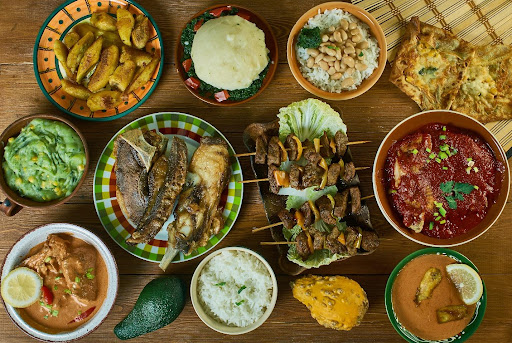According to Fortune Business Insights, the global luxury goods market is set to gain traction from the introduction of fashion-forward and innovatively created products. This information is given by Fortune Business Insights™ in a new report, titled, “Luxury Goods Market, 2020-2027.” The report further states that the luxury goods market size was USD 316.16 billion in 2019. It is projected to grow from USD 257.26 billion in 2020 to USD 352.84 billion in 2027 at a CAGR of 4.6% in the forecast period.
COVID-19 Pandemic: Surging Purchase of Essential Items to Affect Growth Negatively
The COVID-19 pandemic has taken a huge toll on the global economy. The demand for luxury goods declined amid the crisis because of the inclination of people toward purchasing only essential products. Working groups have faced reduction in their salaries and loss of employment. At the same time, stay-at-home orders have drastically lowered the demand for premium goods. We are offering detailed research reports to help you gain a competitive edge in the luxury goods industry.
Fortune Business Insights™ lists out all the luxury goods market companies that are presently striving to reduce the impact of Covid-19 pandemic on the market:
- LVMH Moët Hennessy-Louis Vuitton SA (Paris, France)
- Compagnie Financière Richemont SA (Geneva, Switzerland)
- Kering SA (Paris, France)
- Chow Tai Fook Jewellery Group Limited (Central, Hong Kong)
- The Estée Lauder Companies Inc. (New York, U.S.)
- Luxottica Group SpA (Milan, Italy)
- The Swatch Group Ltd. (Biel / Bienne, Switzerland)
- L’Oréal Group (Clichy, France)
- Ralph Lauren Corporation (New York, U.S.)
- Shiseido Company, Limited (Tokyo, Japan)
How Did We Conduct Our Research?
The report involved four notable activities in projecting the current market size. Exhaustive secondary research was conducted to gather data about the parent and peer markets. Our next step included primary research to authenticate these sizing, assumptions, and findings with numerous luxury goods industry experts. We have also used bottom-up and top-down approaches to calculate the market size.
Drivers & Restraints-
Increasing Demand from High-income Groups to Favor Growth
Luxury goods are mainly purchased by the high-income group across the globe. Oxfam International’s data, for instance, declared in January 2020 that approximately 2,153 billionaires residing worldwide possess more wealth than around 4.6 billion people who make up 60% of the global population. Hence, the increasing wealthy population would bolster the luxury goods market growth in the near future. However, the trends of selling and buying counterfeit products at cheaper rates that resemble original ones may hamper growth.
Segment-
Clothing Segment to Remain at the Forefront Backed by High Demand from Men & Women
Based on the product type, the clothing segment generated 28.79% in terms of the luxury goods market share in 2019. This growth is attributable to the increasing demand for men and women globally. The bags segment is anticipated to exhibit rapid growth in the upcoming years stoked by the high demand for leather-based products.
Regional Insights-
Rising Disposable Incomes to Drive Growth in North America
Geographically, Europe earned USD 103.86 billion in 2019 in terms of revenue. It is likely to lead the market throughout the forthcoming years because of the presence of numerous manufacturers in the region, such as Burberry, LVMH, and L’Oréal. In North America, the presence of many rich people in the U.S. would accelerate growth. The market for luxury goods in Asia Pacific is likely to grow at a fast pace fueled by the high disposable incomes of people. Besides, the increasing number of working women in the region would propel growth.
Rеаѕоnѕ to Get thіѕ Rероrt:
- A qualitative and quantitative market study based on segmentation that includes both economic and non-economic factors
- Data on market value for each section and sub-segment
- Indicates the region and market segment that is likely to expand the fastest and dominate the market.
- The consumption of the product/service in each region is highlighted, as are the factors affecting the market within each region.
- The competitive landscape includes the top players’ market rankings, as well as new service/product launches, collaborations, company expansions, and acquisitions made by the companies profiled in the last few years.
Competitive Landscape-
Key Players Aim to Compete with Rivals by Launching Unique Products & Merging with Others
The global market for luxury goods houses a large number of companies that are mainly aiming to strengthen their positions worldwide. To do so, they are adopting the merger and acquisition strategy. Also, some of the others are introducing novel luxury goods to attract more customers.
Below are the two latest industry developments:
- October 2020: Ralph Lauren, a leading provider of digital-first customization, included the packable quilted jacket, its best-selling outerwear piece, in collection. Its exterior is made up of recycled down-alternative insulation, polyester fabrics, and recycled nylon. The company aims to bring 100% sustainability till 2025.
- October 2020: LVMH Moët Hennessy Louis Vuitton SE (LVMH) concluded an agreement with Tiffany & Co. to refine a few terms of their previously accepted merger agreement, showcasing a purchase of 131.50 dollars per share.



